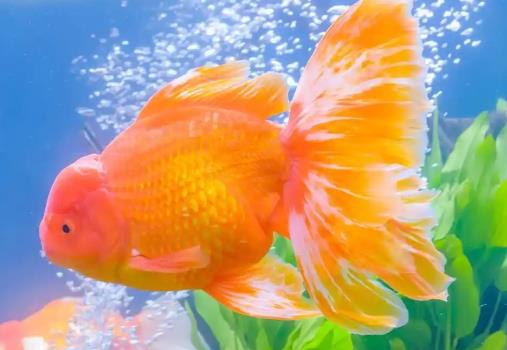The disease prevention of goldfish in spring mainly includes the following aspects:
Water Quality Management: In spring, as the temperature rises, the activity of goldfish increases, and the water quality is prone to deterioration. Therefore, special attention should be paid to water quality management. Try to use aged water to raise fish. The proportion of water change should not be too large. Generally, it should be 30% new water and 70% old water, or 40% new water and 60% old water, to avoid drastic changes in water temperature. The water change should be carried out in the morning to avoid excessive temperature differences. As the temperature rises, change about 1/4 of the water every 3 - 5 days. If there is no filtration equipment, it is recommended to siphon off about 1/6 of the old water at the bottom of the tank every day and replace it with an equal amount of new water at the same temperature or slightly higher (0.5 - 1 degree higher). If there is a filtration system, changing about 1/4 of the water every three to five days is sufficient.

Feeding Management: In spring, the appetite of goldfish recovers, and the amount of feeding needs to be gradually increased. Select baits that are rich in protein and nutrients, such as live water fleas, bloodworms, or artificial baits with a high protein content. The feeding frequency and amount should be increased gradually. At first, you can feed once a day, and then gradually increase it to two or three times a day. However, be sure to avoid over - feeding to prevent goldfish from getting enteritis.
Disease Prevention: Spring is a high - incidence period for goldfish diseases, especially gill diseases. There are mainly two types of gill diseases: bacterial and parasitic. For bacterial gill diseases, the gill filaments will lose blood and turn white, with flocculent substances. For parasitic gill diseases, there will be defects on the gill filaments bitten by parasites. To treat bacterial gill diseases, you can use the 0.8% salt bath method combined with yellow powder. For parasitic gill diseases, you can use Rinozan. In addition, regularly disinfect the water body with chlorine dioxide, which can effectively prevent diseases.
Quarantine and Isolation: Before new fish are introduced into the tank, they should be quarantined and isolated to avoid bringing in germs or parasites. The isolation period should be more than one month before they can be put into the main tank.
Common Diseases of Goldfish in Spring, Their Symptoms and Treatment Methods:
Gill Disease: Diseased fish will become listless, have a reduced appetite, a dark body color, be unable to close their gill covers, have congested gill filaments, and increased mucus. Treatment can involve using the salt bath method and yellow powder, or using Rinozan for parasitic gill diseases.
Erythrodermatitis: Diseased fish will have inflamed and congested body surfaces, scale shedding, and congested gill covers. Treatment can be carried out by using quicklime to clean the pond and spraying chlorine dioxide powder throughout the pond.
Pinecone Disease: The scales of diseased fish will open outwards, and exudate will overflow. Treatment can be achieved by spraying bleaching powder throughout the pond.
Saprolegniasis: Diseased fish will have gray - white flocculent substances attached to their body surfaces, and their gill filaments will be bleeding. Treatment can be carried out by soaking the fish in salt or spraying Galla chinensis throughout the pond.
Through the above measures, common diseases of goldfish in spring can be effectively prevented and treated, ensuring the health and vitality of goldfish.
